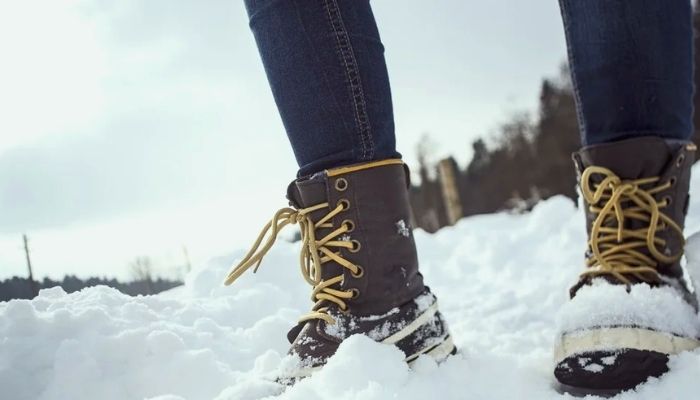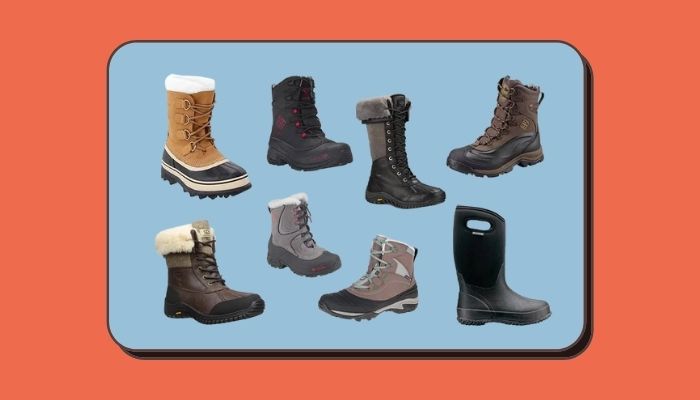Winter boots keep our feet warm and toasty during the freezing winter. And, just like all footwear they too need to be replaced. But, how often?
Well, that’s the answer I’m going to give you today. After careful inspection and intense research, I came up with this informative guide to answer your question.

So, how often should you replace your winter boots?
It’d be very unfair to leave you with these bits of information. Therefore, keep on reading till the end to know everything regarding this topic.
How Often Should You Replace Winter Boots?|Answered
Winter boots are one of the most vital components when it comes to tackling the harsh winter. Without them, you won’t be able to set your foot outside.
While you may think of using other boots to tackle the winter but trust me that’s a bad idea. In fact, you may suffer as a result. So, discarding that idea should be in your best interest.
Coming back to the point, winter boots are made sturdy with strong materials so that they back you up in all ways possible.
But, hey! They’re a kind of footwear, and like other footwear, there will come a time when you’ll need to replace them.
If your winter boots are of the highest quality, then you should replace them after 3 seasons. And, if they’re a tad bit low on quality then replace them after 2 seasons. And, if you have the cheaper ones, replace them after a season.
Follow our guide to know Are Timberland Boots Good For Winter.
But, the numbers will increase or decrease depending on how you use them. If you use them daily then they’ll wear down faster, which automatically increases the chance of replacing them faster.
On the other hand, if you take good care of your winter boots then they’ll last longer and you’ll be able to replace them later rather than sooner.
The material also plays a big part in the boot’s lifespan. If your boots are made of the highest quality leather, then they’ll easily outlast any other kind of winter boots.
So, if you want to replace your winter boots after a good amount of time, then get the best ones out there.
If budget is an issue then get the pair that’s within your reach. But, you’ll have to keep in mind that you’ll have to replace them sooner rather than later.
Go through our epic guide on How Often Should You Replace Skis.
Top 5 Signs You Need To Replace Your Winter Boots
It’s a given, you’ll need to replace your winter boots; be it sooner or later. Before your footwear completely breaks down, they’ll give you some signals of wearing it down. And, what are they?
Here are the top 5 signs you’ll need to replace your winter boots:
Damaged Linings
Winter boots are equipped with a comfy and warm inner lining to help your feet counter the bone-chilling cold. The liners mainly consist of synthetic and natural materials such as felt, sheepskin, or wool.
Upon regular use, there will come a time when they’ll give in. And, when you see your liners are no longer providing you with warmth, then it’s a clear indication you’ll need to replace your winter boots.
Fallen Seams
The upper portion of your boots is fitted to the sole with either glue or they’re stitched together to complete the footwear. Heavy use and moisture play a big role in their demise.
So, when you see the outer seams are splitting open after flexing in any direction; it’s time to replace your winter boots.
Read more on How Often To Replace Danskos.
Tears
Be it small or big, there’ll come a time when your winter boots will get tears. And, the cold will slowly give you a true feel of winter thanks to them. So, if you see tears around any part of the upper, then it’s probably a good idea to replace your winter boots.

Worn-out Soles
Worn-out soles can be a big headache, especially if the pair is your favorite! If the soles of your winter boots are replaceable then do it ASAP, if not then my friend it’s time to say goodbye to your long-serving ally.
Damaged Insoles
By damaged I mean to say pressed insoles. Upon long-term use, the insoles will get pressed, so much so that the entire shape of your feet will take place. And, if you see it in your precious winter boots; it’s high time you replace them.
Check out our separate post on How Often Should You Replace Your Football Boots.
Are Winter And Snow Boots The Same?
No, winter and snow boots are not the same. While both are meant to be used in the winter, they have different purposes. Snow boots are made to be used in wet snowy conditions. On the other hand, winter boots are made to be used generally where there is no snow.
Now, this is one I get a lot. And, not surprisingly there are many confused souls out there regarding this topic. so, Let’s see where these two boots vary.
Winter Boots
Winters are made for dry winters where there is no snow. They come with good insulation, which is usually built inside the boots. Some winter boots are waterproof, while others are water resistant.
You may now say, why not use the waterproof ones in the snow? Sadly, even the waterproof ones fail to prevent snow from entering through the boots’ opening.
Plus, their waterproofing ability is inferior to that of snow boots. If you really want to use your winter boots in the snow, then you’ve to use additional snow gaiters.
Using winter boots in snowy conditions isn’t really a great idea. I don’t know if it sounds enticing to you, but it certainly doesn’t to me.
You should use your winter boots where there is no snow, otherwise the consequences could be dreadful.
Also, follow our guide on How Often Should You Replace Snowboard Boots.
Snow Boots
As the name suggests, snow boots are meant to be used in wet snowy conditions. They have a sturdier and stronger build compared to winter boots.
Snow boots will easily survive deep, thick mud. And, thick wet piles of snow. In fact, you can really plow your way through, if you want to! People who are used to dense snow, thrive with these boots.
A pair of high-quality snow boots will come with rubber bottoms, which have 100% waterproofing ability. You won’t have to use any additional gaiters or something like that.
The upper usually consists of leather or a combination of leather and nylon. Compared to winter boots, they have higher shafts; perfect for protecting your legs if you must walk through thick piles of snow.
Plus, the higher shaft provides extra warmth and ankle support. In short, snow boots are made for those who spend or need to spend their time out in the cold wet snow.
With them at your disposal, you’ll get protection from the snow from every angle possible.
Factors To Look At When Shopping For Winter Boots
When we go shopping for any particular footwear there are some specific factors we keep in mind. And to no surprise, it’s no different when it comes to winter boots. You’ll need to get some aspects right if you want to make the perfect purchase. So, what are they?
Here are the factors to look at when shopping for winter boots:
Temperature Rating
Temperature rating is arguably the most important factor to keep in mind when you go winter boot shopping. It tells you how the boot will fare at a certain temperature.
You’ll find this game-changing aspect in high-end brands. I find this feature really helpful as it gives the correct idea to buy the right pair of winter boots for you.
However, the temperature rating isn’t always correct as factors such as your gait, movement and speed can affect the performance of your winter boots. Therefore, I’d suggest you do your research about the pair you’re going to buy.
Insulation Type
There are mainly two types of insulation you’ll come across; synthetic and natural.
Synthetic insulations consist of synthetic fibers and are usually more common and less expensive than their natural counterparts. However, they get the edge over the naturals as they’re lighter and are easier to maintain.
Natural insulations are made using materials such as felt, wool, and sheepskin. They’re usually fitted into the inner lining and the boots unlike their synthetic counterparts, which are fitted between the shell and the inner lining of the boot.
Boots with natural insulations are sturdier and are more durable.
Boot Weight
The weight of winter boots varies greatly from one pair to the other. Work winter boots weigh the most as they provide the most insulation. Next comes the hiking and casual ones. You should keep this in mind based on your activity.
Waterproofing
The level of waterproofing of a pair of winter boots is decided by their insulation type, category, and type. It’ll vary from one manufacturer to the other.
If you want the perfect pair of waterproof winter boots, you’ll have to keep in mind factors such as category and use first. Next come the materials and liners.
Some Important Tips Regarding Winter Boots
People often wait till the first fall of snow before they pull out their winter boots, and immediately pack them up when spring arrives.
While winters can be fun, there are some precautions that you should take to get this season successfully, especially in terms of your winter boots. I’ve listed some important tips which will benefit you and your boots.
Here are some important tips regarding winter boots:
- Winter boots last 1-3 seasons at max. And, expired winter boots can be hazardous for your foot health. Worn out winter boots will have patterns that can change the way you walk. Also, the traction loses gradually.
- If you live in a snowy area, look for winter boots that have deep tread patterns to prevent you from slipping as snowy areas are quite slippery
- Wet boots can increase the chance of fungus taking place quickly. Therefore, your winter boots should always be kept dry. Also, try to wear moisture wicking socks.
- Wear properly fitted winter boots with proper wiggle space for your toes, so that they can circulate the warm air within the boots.
- If you must spend a lot of time outside, then you better get the temperature rating of your winter boots right. Otherwise, you may experience frozen feet.
Parting Thoughts
No footwear is everlasting, there will come a time when you’ll need to replace them. Your winter boots are no exception! I’ve told you everything I know about this subject.
Do let me know if I’ve missed anything important, down in the comment section below. And, feel free to ask any sort of questions. You can also spread this information among your friends or family who might be in need of it.
This was all from me, today. Take care, stay safe, and stay warm.




